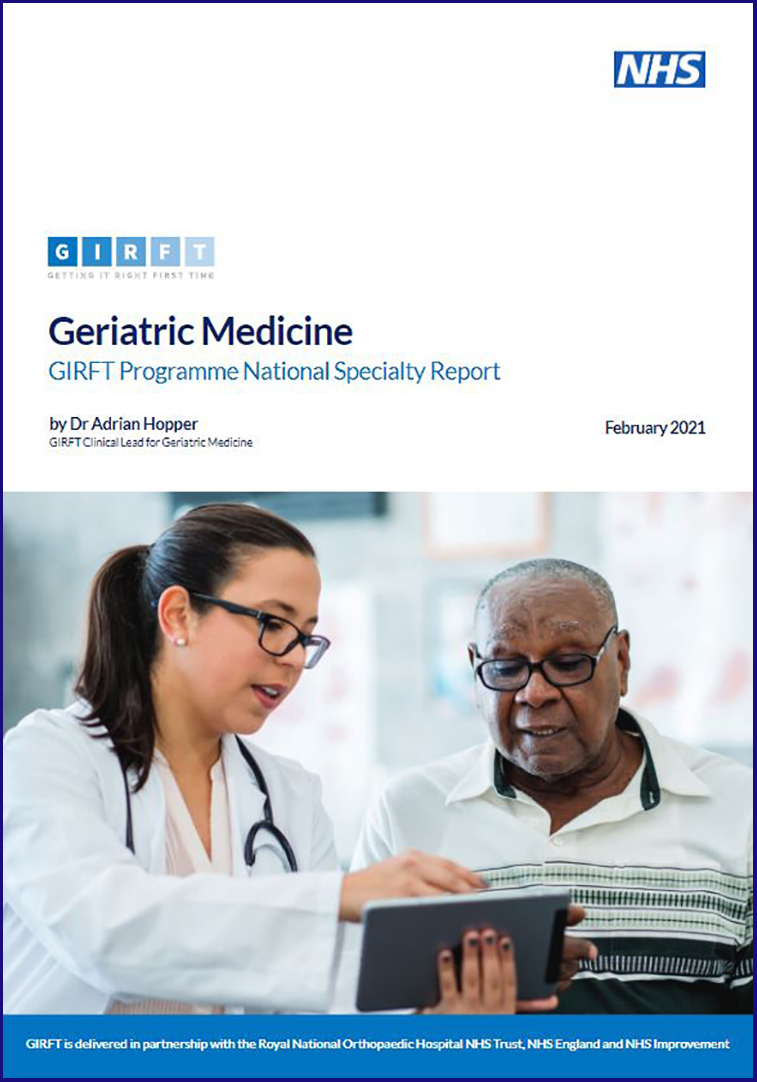Today the British Geriatrics Society (BGS) and Getting It Right First Time (GIRFT) published new guidance aimed at supporting hospital teams to improve care for older people living with frailty.
Six Steps to Better Care for Older People in Acute Hospitals is designed to accompany the new GIRFT Hospital Acute Care Frailty Pathway. It offers detailed measures teams should take to improve care and reduce ‘hospital-acquired dependency’ for those living with frailty, as well as stressing that interventions should be monitored and linked more widely to community-based services.
In 2021, GIRFT published its national report for geriatric medicine, following a review led by Dr Adrian Hopper. The report focused mainly on the management of frailty in older people, the area of geriatric medicine where there is the greatest risk of avoidable harm and biggest scope for improvement.
It showed that demand for frailty services is growing as people live longer; the number of over-85s in England with dementia or other long-term health conditions is predicted to almost double from 233,000 in 2015 to 446,000 in 2035.
Pre-COVID data shows that between 5% and 10% of people attending A&E departments and 30% of patients in acute medical units are older and living with frailty, with more than 4,000 admissions daily of people with frailty, for reasons such as falls, minor infections and reactions to medications.
The report called for a collaborative approach across whole systems, including primary and secondary care, care homes, community services, ambulance services, local authorities and the voluntary sector. The report stated that this approach should be implemented as best practice to help prevent the progression of frailty and avoid the need for older people to be admitted to hospital where more effective care can be offered elsewhere.
The new guidance is the result of several months of clinical collaboration to agree on a standardised pathway for frailty care, to support NHS teams. The six steps outlined in the guidance are:
- Assess for frailty: Systematically identifying frailty in all settings using the Clinical Frailty Scale.
- Prevent complications: Taking measures to prevent, identify and effectively manage delirium and reduce hospital-acquired deconditioning.
- Home First: Starting discharge planning for older people with frailty and/or dementia as soon as possible after admission, using a ‘Home First’ principle.
- Surgical liaison: Offering evidence-based surgical specialty liaison that improves individual and service-level outcomes for older people.
- Rehabilitation: Taking steps to ensure there is effective recuperative rehabilitation for older people on all wards in hospital and in linked community services.
- Primary and community care: Developing effective primary and community care services that support older people to remain in, or return to, their usual residence.
The guide also recommends the development of a local comprehensive strategy for supporting care for people living with frailty (using frameworks such as the NHS Rightcare Frailty Toolkit). It advocates for careful and creative use of the available workforce and development of a larger specialist workforce to ensure that staff with the required expertise are deployed where they can add most value.

